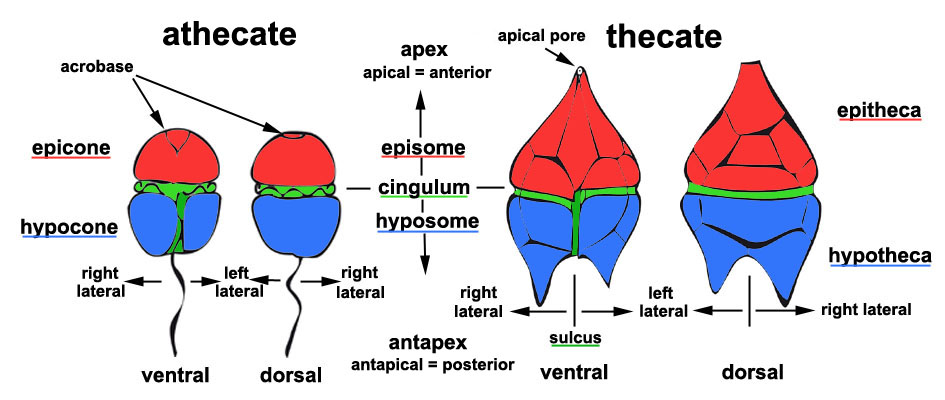Motile single dinoflagellate cells have per definition an orientation. This cell orientation needs to be understood to describe the species properly and to understand published descriptions. The cell is divided in an upper part and a lower part separated by the cingulum (transverse furrow). The upper part is generally named episome but could be called epicone in athecate (naked) cells and epitheca in thecate (armoured) cells. Respectively the lower part is the hyposome or hypocone in athecate and hypotheca in thecate cells. The cells are swimming with the apex (the top of the episome) to the front. The bottom of the hyposome is the antapex. Everything above the cingulum is apical or anterior and everything below the cingulum is antapical or posterior. Per definition the cell side with the sulcus (longitudinal furrow) is ventral. The opposite side to ventral (the "venter") is dorsal (the "back"). Having ventral and dorsal, you can also distinguish between a left lateral and right lateral side. Athecate dinoflagellates can have an acrobase (apical groove) at the apex and thecate cells can have an apical pore.


Overview of the external morphology and its terminology of athecate and thecate dinoflagellate cells. © Mona Hoppenrath




 Go to quick links
Go to quick search
Go to navigation for this section of the ToL site
Go to detailed links for the ToL site
Go to quick links
Go to quick search
Go to navigation for this section of the ToL site
Go to detailed links for the ToL site